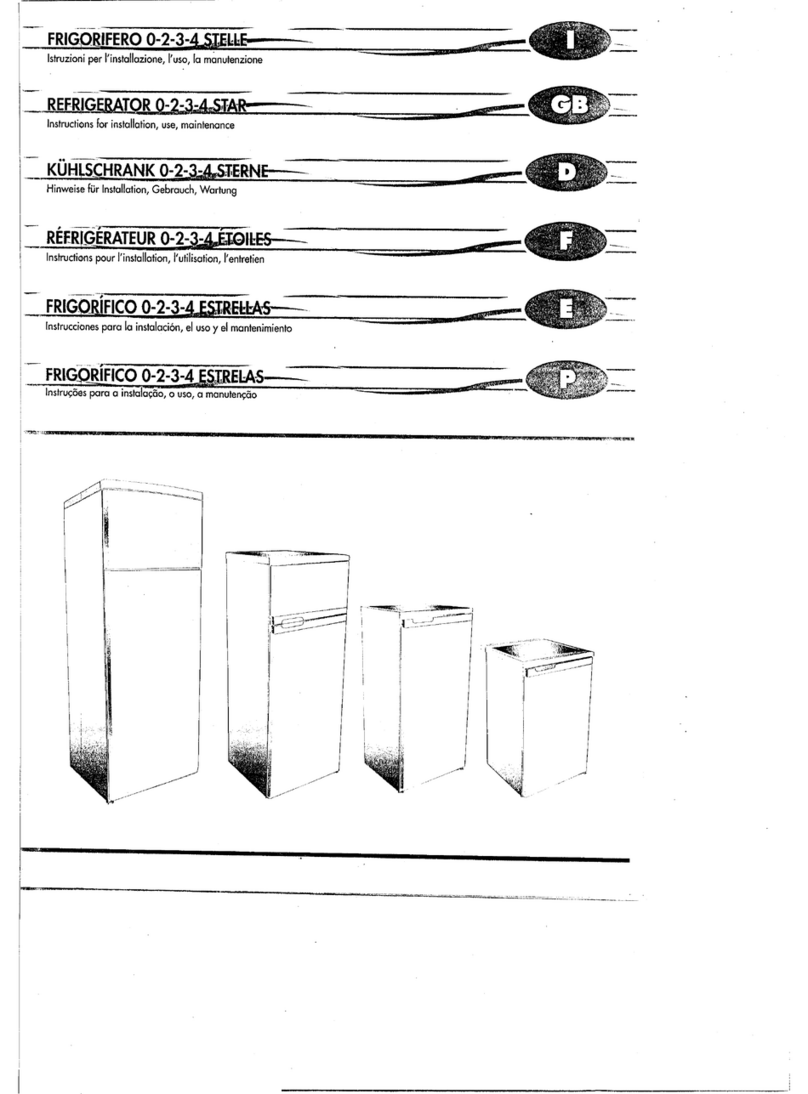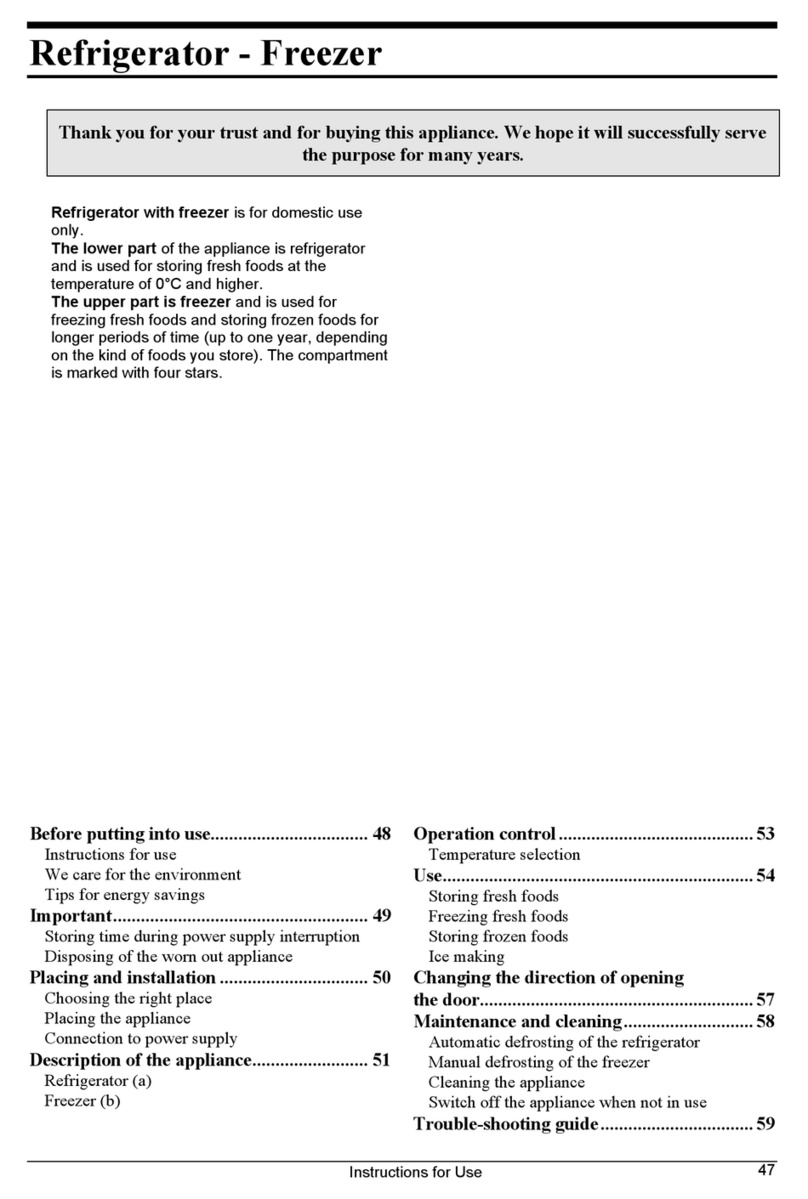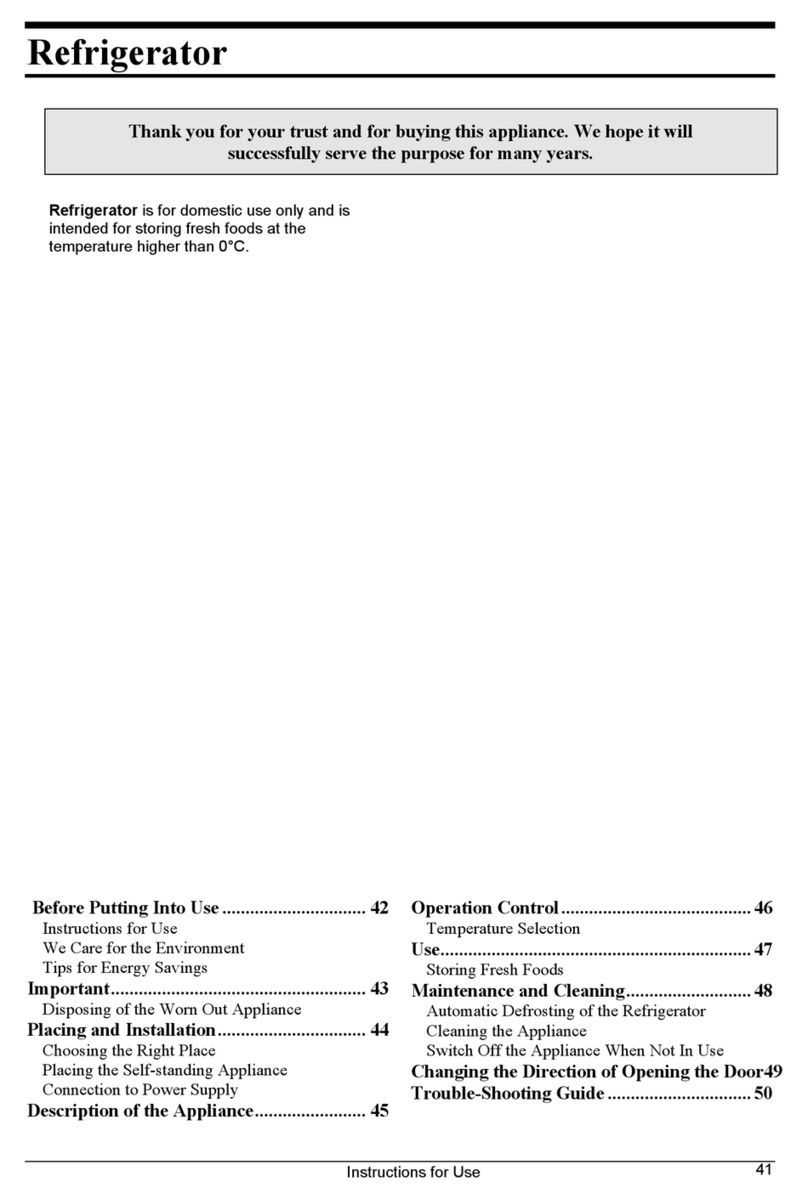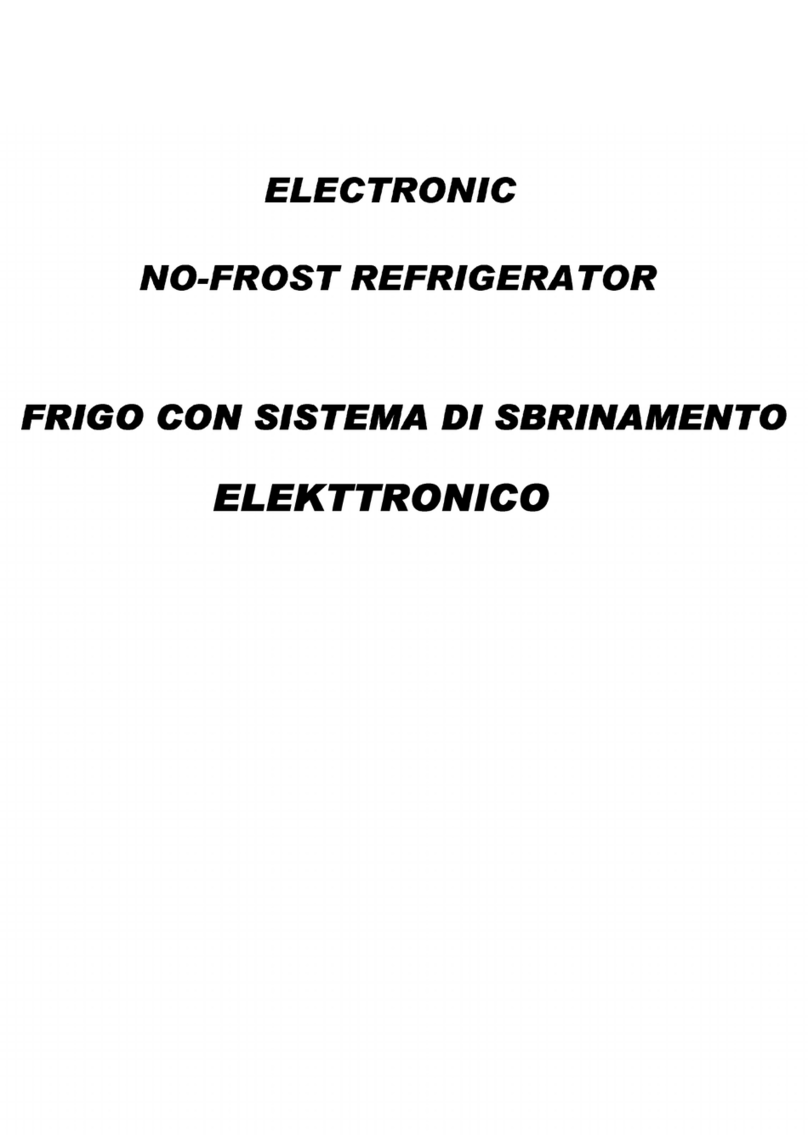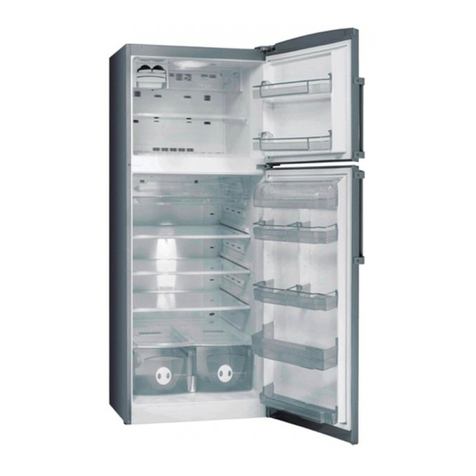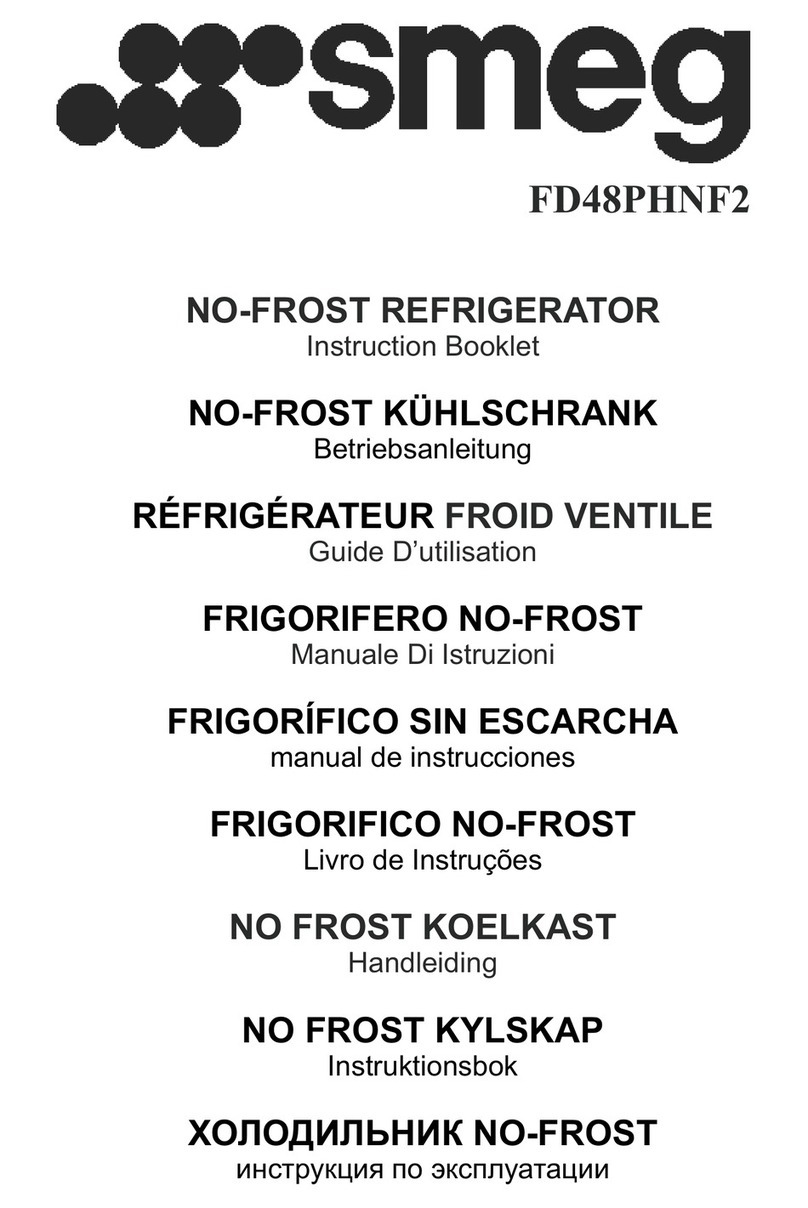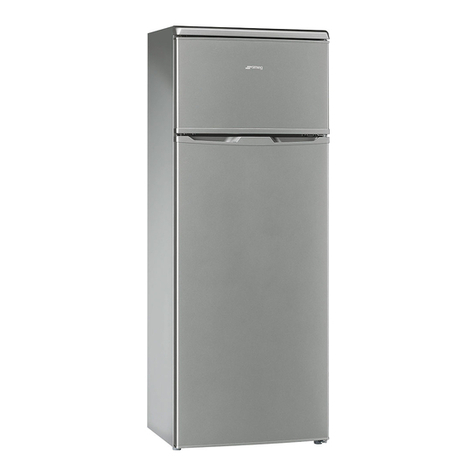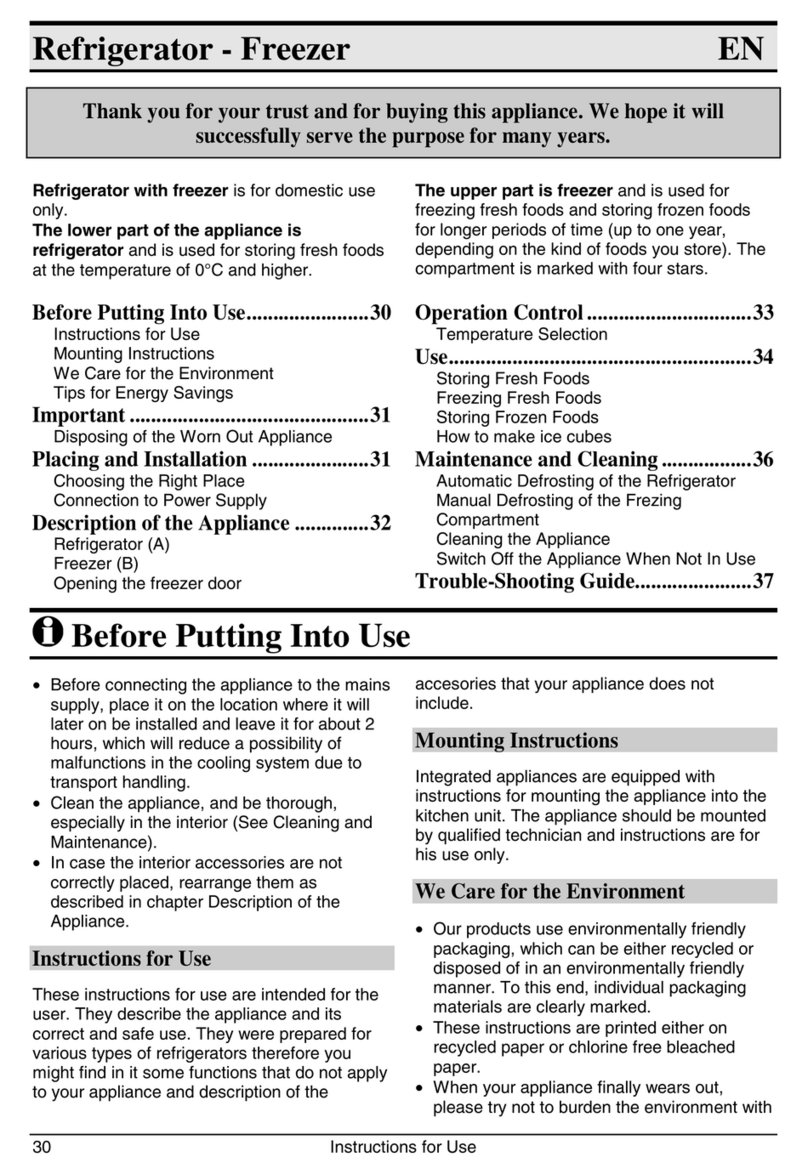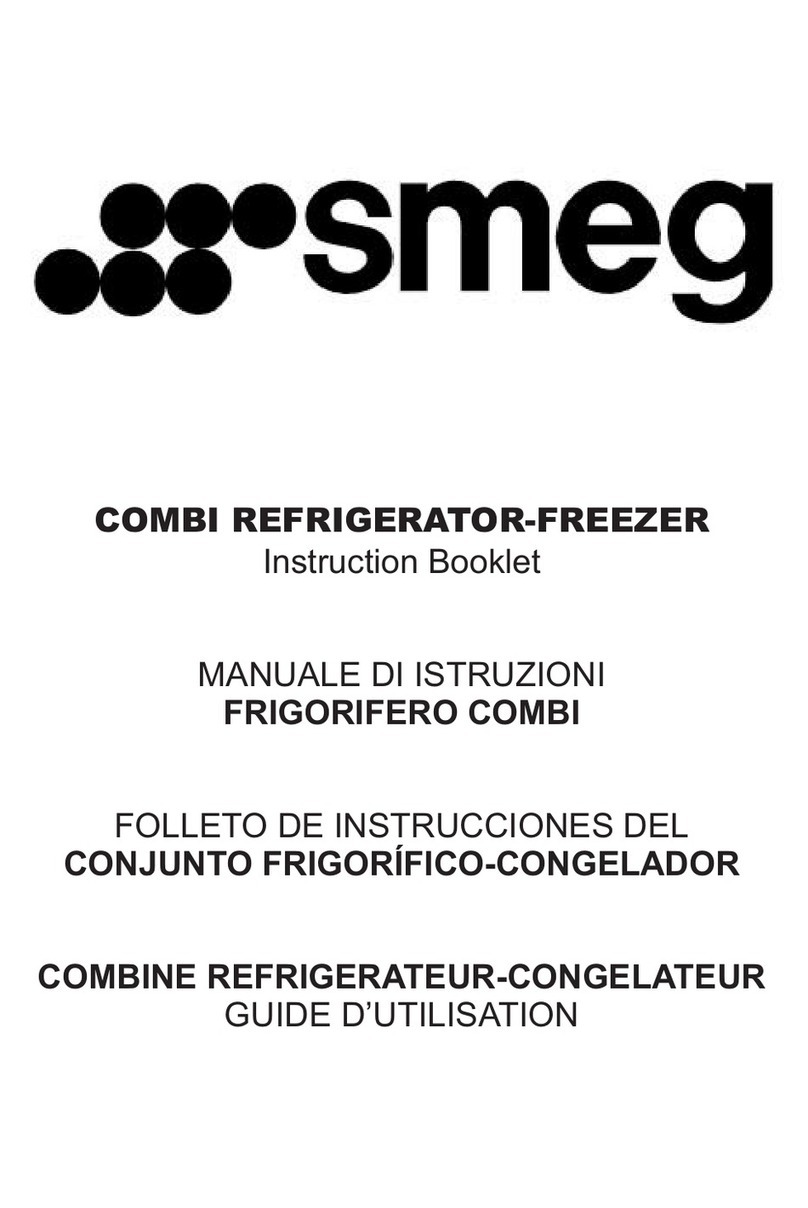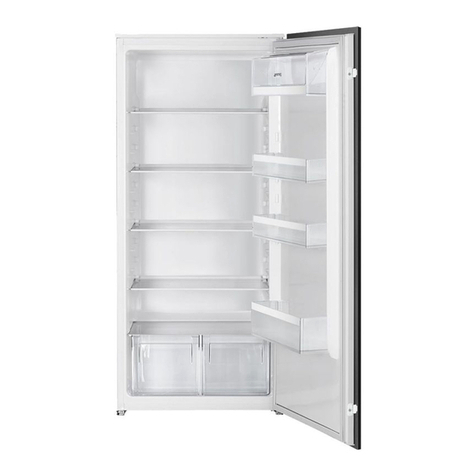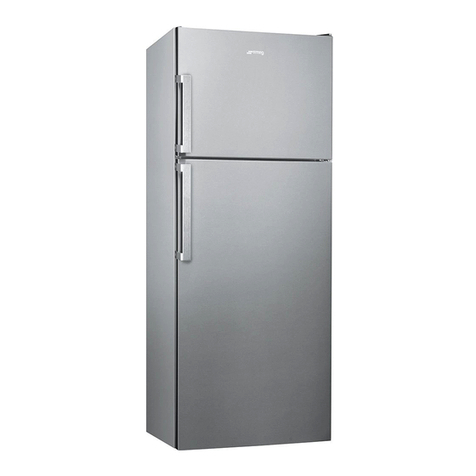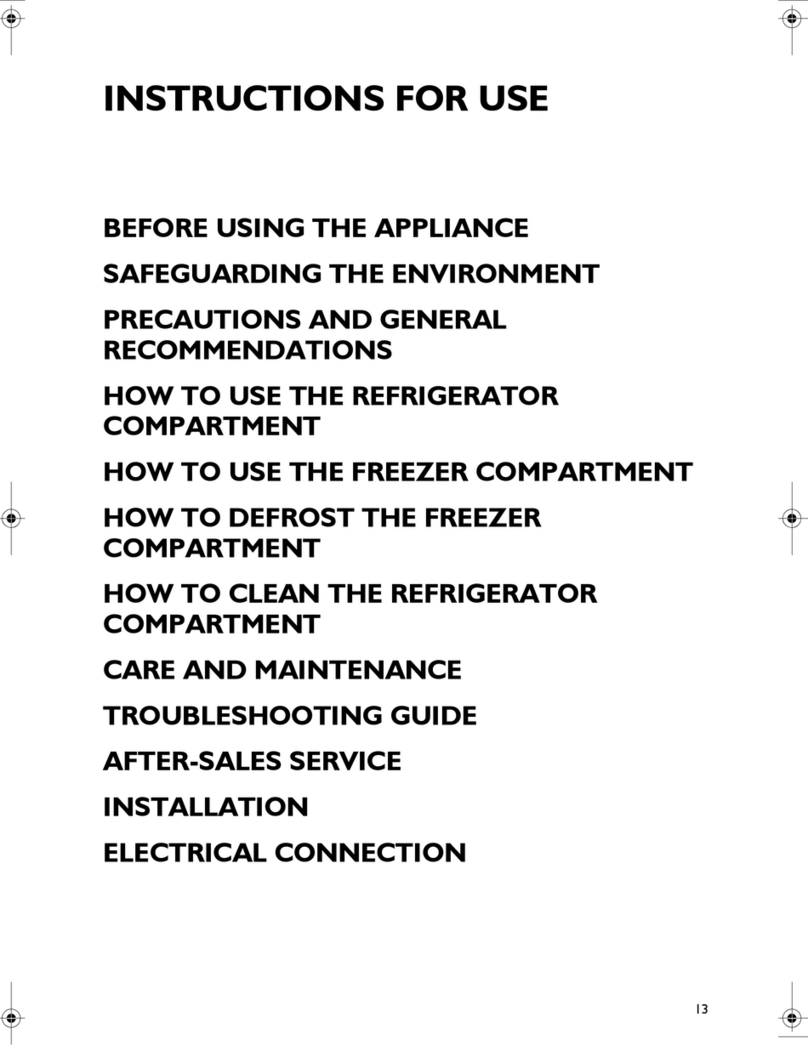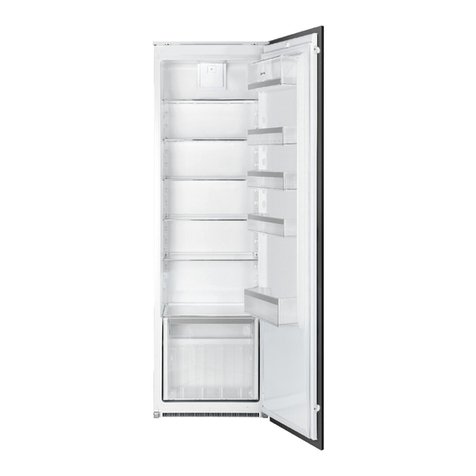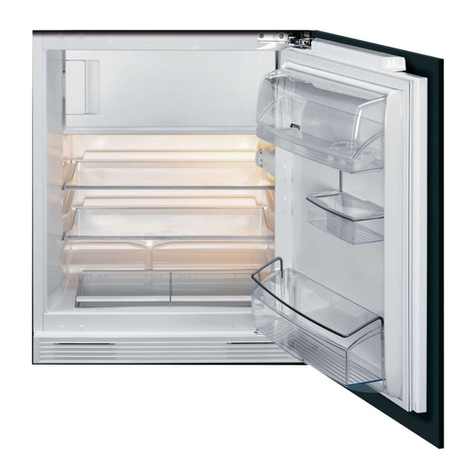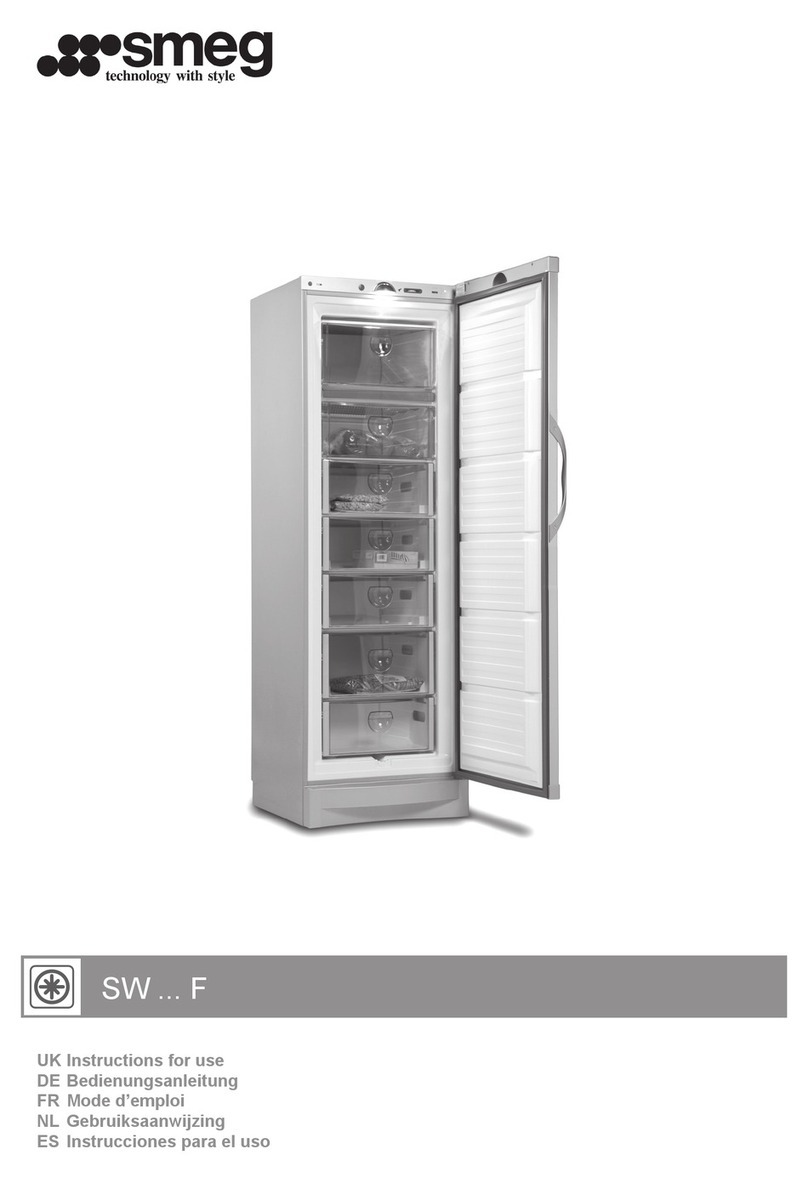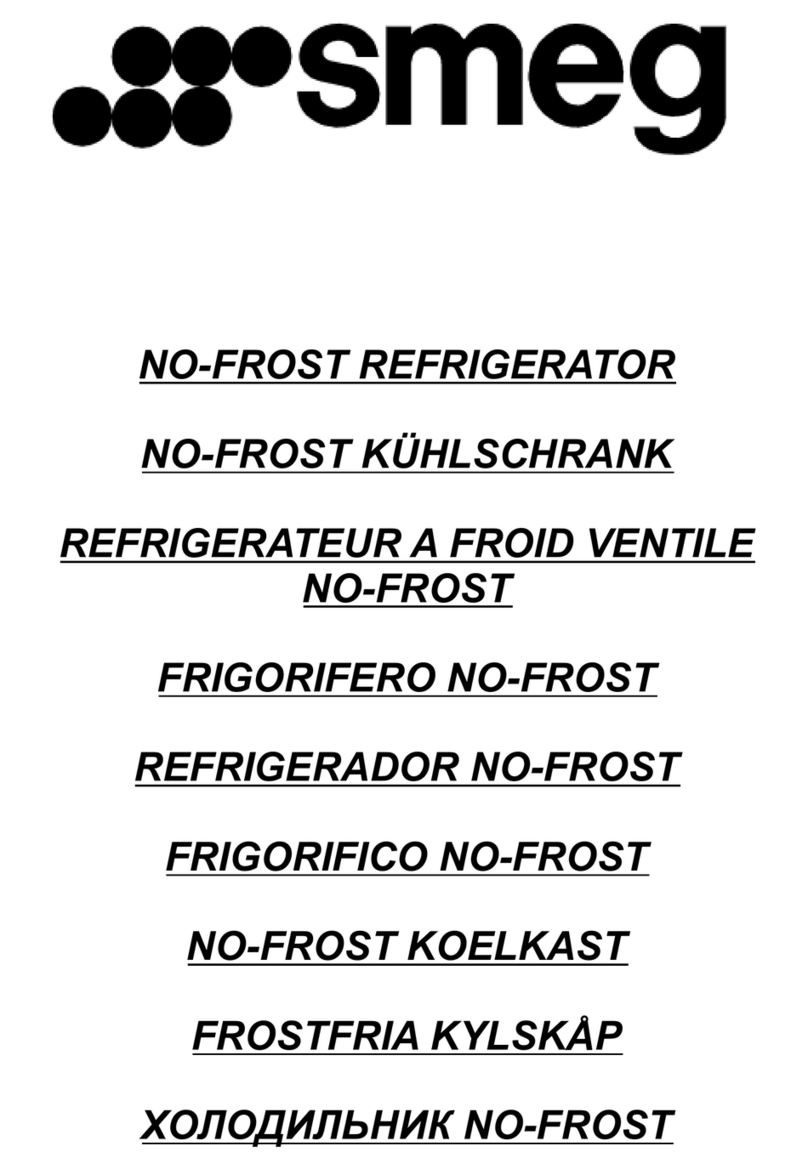18
GB
CONNECTION TO THE MAINS
WARNING! The appliance must be plugged
in to an earthed electricity supply socket.
• The frequency and power of the electricity
supply in your house must conform to the
general data parameters of the appliance as
it is shown in the table (see page 16).
• When positioning the appliance, be
careful that the electrical cord isn’t squeezed
in order to avoid its damage. This can cause
a short circuit and a fire.
• Make sure that the plug of the electrical
cord is not squeezed by the back wall of the
appliance or otherwise damaged. A damaged
plug can be the cause of a fire!
• When unplugging the appliance, do not
touch the plug pins of the electrical cord.
CHANGING THE INTERIOR LIGHT
BULB
When changing the interior light bulb (fig. 6),
do the actions below in the order they are
listed:
1. Unplug the appliance from the mains by
pulling the plug out of the electricity supply
socket.
2. Push the interior light bulb lid retainer
with a flat screwdriver and with your other
hand pull it toward yourself.
3. First check whether the bulb has really
burnt out: unscrew it and screw it back in.
Plug the appliance into the electricity supply.
If the bulb lights up, it is not necessary to
change it.
4. If the bulb does not light up, replace it
with another 15 W bulb of the same type with
an E14 lamp holder.
5. When you have changed the light bulb,
replace the lid and push — the lid will snap
into position. Plug the appliance into the
electricity supply socket.
CHANGING THE OPENING
DIRECTION OF THE DOORS
It is recommended that changing the opening
direction of the doors should be done with a
helper. You will need two spanners No. 8 and
No. 10 and a Philips head screwdriver.
!When changing the opening direction of
the doors, YOU CAN NOT lay the refrigerator
horizontally. Do the actions below in the order
they are listed (fig. 7):
WARNING! Turn off the appliance and
pull the plug out of the electricity supply
socket.
1. Remove the two supports 1at the top
back part of the refrigerator and undo the
screws 2.
2. Undo the two screws 3that hold the pull-
out shelf.
3. Take out pull-out shelf 4.
4. Take off bracket 5with the spacers that
are on the shaft.
5. Remove freezer compartment door 6.
6. Remove middle bracket 7together with
the washers that are on the shaft.
7. Remove freezer compartment door 8.
8. Remove middle bracket 9together with
the washers that are on the shaft. Unscrew
the shaft by turning it counter-clockwise.
Turn bracket 9around a full 180° and screw
the shaft back in.
9. Attach bracket 9on the opposite side.
10. Remove caps 10 from refrigerator and
freezer compartment doors and press them
in on the opposite side.
11. Remove decorative caps 11, unscrew bolts
from the partition separating the refrigerator
and freezer compartment, and screw them in
on the opposite side. Replace the decorative
caps on the bolts.
12. Mount refrigerator compartment door on
the shaft of bracket 8.
13. Turn bracket 7, together with the bolts
on the shaft and the plastic washer, around a
full 180°, replacing the bolts on the shaft and
tightening them on the opposite side.
14. Mount the freezer door on the shaft of
bracket 7.
